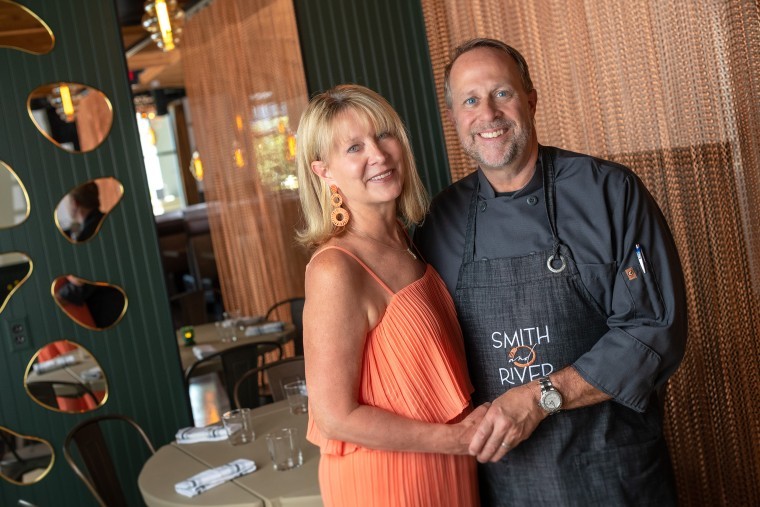Is Splitting The Bill Common? Yes, splitting the bill is a common practice in many dining scenarios, but it’s essential to understand the nuances and cultural context, especially when traveling to a vibrant country like Vietnam. SIXT.VN offers expert advice and convenient services to ensure your culinary experiences are enjoyable and stress-free. Our goal is to provide you with the best travel experience possible, including recommendations on local customs and dining etiquette.
1. Understanding the Culture of Sharing in Vietnam
In Vietnamese culture, sharing is a deeply ingrained value that extends to many aspects of daily life, including dining.
1.1. How Sharing Influences Dining Habits
Sharing food is more than just a practical way to divide costs; it reflects the communal spirit and hospitality that are central to Vietnamese culture. According to a study by the Vietnam National Administration of Tourism in [2023], communal dining experiences are highly valued as they foster closer relationships and create memorable moments. This is evident in the way Vietnamese families and friends often share dishes placed in the center of the table, encouraging everyone to partake and enjoy together.
1.2. Cultural Norms in Group Dining
- Communal Dishes: Many Vietnamese meals involve shared dishes, allowing everyone to sample a variety of flavors.
- Offering and Accepting: It’s polite to offer food to others at the table before serving yourself.
- Respect for Elders: The eldest person often initiates the meal, and their preferences are respected.
1.3. What This Means for Travelers
For travelers, understanding this culture of sharing can enhance your dining experiences and help you navigate social interactions more smoothly. However, when it comes to splitting the bill, the approach can vary.
2. Is Splitting the Bill Common in Vietnam?
While sharing is a cultural cornerstone, the practice of splitting the bill in Vietnam is more nuanced and depends on various factors.
2.1. Common Scenarios Where Splitting is Expected
- Groups of Friends: When dining out with friends, splitting the bill is generally acceptable, especially among younger generations.
- Casual Gatherings: At casual restaurants and eateries, dividing the cost equally is a practical and straightforward approach.
- No Clear Host: If no one explicitly invites others as a host, splitting the bill is usually the default.
2.2. Situations Where Splitting May Not Be Appropriate
- Invited Guests: If someone invites you to dine as their guest, it’s generally understood that they will cover the bill. Offering to pay your share might be seen as impolite.
- Business Meals: In business settings, the person who extends the invitation typically handles the payment.
- Older Generations: Among older Vietnamese, there’s a stronger tradition of one person, often the host, paying the entire bill as a sign of generosity and respect.
2.3. How to Navigate These Scenarios
- Observe the Context: Pay attention to the dynamics of the group and the setting of the meal.
- Communicate Openly: If unsure, politely inquire about the expected approach to payment.
- Offer to Contribute: Even if you’re a guest, a gracious offer to contribute is often appreciated, though it may be declined.
3. How Do Locals Handle Splitting the Bill?
Understanding how locals manage bill-splitting can provide valuable insights for travelers.
3.1. Traditional Approaches
Traditionally, especially in more formal settings, one person would cover the entire bill. This is often seen as a display of generosity, status, or respect.
3.2. Modern Methods
With the rise of a more globalized and individualistic culture, younger Vietnamese are increasingly adopting the practice of splitting the bill, especially when dining with friends or in casual settings.
3.3. Digital Payment Solutions
The increasing use of digital payment apps has made it easier to split bills seamlessly. Apps like Momo, ZaloPay, and banking apps allow users to transfer money instantly, simplifying the process of dividing costs.
3.4. Examples of Local Practices
- Rotating Payment: A group of friends might take turns paying for meals each time they dine out.
- Unequal Contributions: In some cases, those who ordered more expensive items might offer to pay a larger share.
- Direct Transfers: Using mobile banking apps to quickly transfer the agreed-upon amount to the person paying the bill.
4. Common Scenarios and How to Navigate Them with Ease
Let’s explore some common dining scenarios and how to handle the bill with grace and cultural sensitivity.
4.1. Dining with Vietnamese Friends
- Scenario: You’re invited to a local restaurant by a Vietnamese friend.
- Approach: Initially, assume your friend will pay, as is customary. However, offer to contribute, saying something like, “Let me contribute to the bill.” If they insist on paying, thank them graciously.
- SIXT.VN Tip: Use this opportunity to learn more about local customs and build a stronger connection with your friend.
4.2. Group Dinner with Expatriates
- Scenario: You’re dining with a group of expatriates in Hanoi.
- Approach: Splitting the bill is generally acceptable and expected. You can suggest dividing the cost equally or calculating individual orders.
- SIXT.VN Tip: Use payment apps to make the process seamless and avoid any awkwardness.
4.3. Business Lunch with Local Partners
- Scenario: You’re having a business lunch with Vietnamese partners.
- Approach: The person who extended the invitation typically covers the bill. If you’re the invitee, express your gratitude and refrain from insisting on paying.
- SIXT.VN Tip: Consider offering to pay for the next meal to reciprocate their hospitality.
4.4. Family Meal with Your Partner’s Family
- Scenario: You’re dining with your partner’s family.
- Approach: Observe the family dynamics. Older generations often prefer to pay the entire bill. Offering to contribute is polite, but respect their decision if they decline.
- SIXT.VN Tip: Showing respect for family traditions can significantly enhance your relationship.
5. Phrases to Use When Discussing the Bill
Having a few polite phrases in your repertoire can make discussing the bill much smoother.
5.1. Offering to Pay
- “Let me contribute to the bill.”
- “I’d like to pay for my share.”
- “Can I offer to pay for this meal?”
5.2. Suggesting Splitting the Bill
- “Should we split the bill evenly?”
- “How about we divide the cost?”
- “Let’s calculate our individual orders.”
5.3. Responding to an Offer to Pay
- “Thank you so much, that’s very kind of you.”
- “I appreciate your generosity.”
- “If you insist, thank you. I’ll get the next one.”
5.4. Phrases for Specific Situations
- When you are the host: “It’s my treat.”
- When you are a guest: “Thank you for inviting me, it was a wonderful meal.”
6. Payment Methods Commonly Used in Vietnam
Understanding the common payment methods in Vietnam can also impact how you split the bill.
6.1. Cash
Cash is still widely used in Vietnam, especially in local eateries and smaller establishments.
- Pros: Universally accepted, no transaction fees.
- Cons: Can be inconvenient for large amounts, requires having small denominations.
6.2. Credit Cards
Credit cards are accepted in larger restaurants, hotels, and tourist-oriented establishments.
- Pros: Convenient, can earn rewards, secure.
- Cons: Not accepted everywhere, potential for foreign transaction fees.
6.3. Mobile Payment Apps
Mobile payment apps like Momo, ZaloPay, and ViettelPay are increasingly popular, especially among younger Vietnamese.
- Pros: Convenient, easy to split bills, often offer discounts.
- Cons: Requires a local phone number and bank account, not universally accepted.
6.4. Tips for Using Different Payment Methods
- Cash: Always have small denominations for convenience.
- Credit Cards: Check if your card has foreign transaction fees.
- Mobile Payment Apps: Consider downloading and setting up a local payment app for ease of use.
7. Etiquette Tips for Dining Out in Vietnam
To ensure a pleasant dining experience, keep these etiquette tips in mind.
7.1. Before the Meal
- Reservations: Making reservations is advisable, especially for popular restaurants. SIXT.VN can assist with reservations as part of our concierge service.
- Dress Code: Dress appropriately for the venue. Casual attire is generally acceptable, but upscale restaurants may require more formal wear.
7.2. During the Meal
- Table Manners: Practice good table manners, such as not talking with your mouth full and using utensils correctly.
- Chopsticks: If using chopsticks, avoid sticking them upright in your rice bowl, as this resembles a funeral ritual.
- Sharing: Participate in sharing dishes and offer food to others.
7.3. After the Meal
- Express Gratitude: Thank your host or dining companions for the meal.
- Tipping: Tipping is not customary in Vietnam, but it is appreciated for exceptional service.
7.4. How SIXT.VN Can Help
- Restaurant Recommendations: SIXT.VN provides curated lists of the best local restaurants based on your preferences.
- Reservations: We handle restaurant reservations to ensure a seamless dining experience.
- Transportation: Our reliable transportation services ensure you arrive at your chosen restaurant on time and in style.
8. Understanding Regional Differences in Dining Customs
Vietnam’s dining customs can vary significantly between regions, reflecting the country’s diverse culture and culinary traditions.
8.1. Northern Vietnam
In Northern Vietnam, particularly in Hanoi, dining is often more formal and conservative.
- Traditions: There is a strong emphasis on family meals and respect for elders.
- Payment: The eldest or the host typically pays the bill as a sign of respect and generosity.
- Cuisine: Northern cuisine features milder flavors and traditional dishes like pho and bun cha.
8.2. Central Vietnam
Central Vietnam, including cities like Hue and Da Nang, has a rich culinary heritage influenced by its history as a royal court.
- Traditions: Dining is often more elaborate and refined.
- Payment: The host usually pays, especially in formal settings.
- Cuisine: Central cuisine is known for its spicy flavors and intricate dishes like banh beo and cao lau.
8.3. Southern Vietnam
Southern Vietnam, especially Ho Chi Minh City, is more modern and cosmopolitan, with a more relaxed dining culture.
- Traditions: Dining is often more casual and social.
- Payment: Splitting the bill is common, especially among younger generations.
- Cuisine: Southern cuisine is characterized by its sweetness and use of fresh herbs and ingredients in dishes like banh xeo and goi cuon.
8.4. Tips for Navigating Regional Customs
- Research: Before traveling to a new region, research local dining customs.
- Observe: Pay attention to how locals behave in dining settings.
- Ask: Don’t hesitate to ask locals for advice on dining etiquette.
9. Navigating Dietary Restrictions and Preferences in Vietnam
Communicating dietary restrictions and preferences is essential for a comfortable dining experience.
9.1. Common Dietary Restrictions
- Vegetarian/Vegan: Vegetarian and vegan diets are becoming more common in Vietnam, but it’s essential to communicate your preferences clearly.
- Gluten-Free: Gluten-free options can be more challenging to find, but many Vietnamese dishes are naturally gluten-free.
- Allergies: Communicating allergies, such as nut allergies, is crucial due to the widespread use of nuts in Vietnamese cuisine.
9.2. Useful Phrases for Communicating Dietary Needs
- “Tôi ăn chay” (I am vegetarian).
- “Tôi không ăn thịt” (I don’t eat meat).
- “Tôi bị dị ứng [tên thực phẩm]” (I am allergic to [food name]).
- “Món này có [tên thực phẩm] không?” (Does this dish contain [food name]?)
9.3. Tips for Dining with Dietary Restrictions
- Research: Look for vegetarian or vegan restaurants in advance.
- Communicate: Inform the restaurant staff about your dietary needs.
- Be Specific: Clearly state your dietary restrictions to avoid misunderstandings.
9.4. How SIXT.VN Can Assist
- Restaurant Recommendations: We provide recommendations for restaurants that cater to specific dietary needs.
- Translation Assistance: Our concierge service can help translate your dietary requirements for restaurant staff.
- Customized Tours: We can arrange customized food tours that accommodate your dietary preferences.
10. The Role of Technology in Modern Dining Etiquette
Technology has transformed many aspects of dining, including how we handle the bill.
10.1. Payment Apps and Digital Wallets
Payment apps like Momo and ZaloPay have become integral to daily transactions, making it easy to split bills and transfer money.
- Convenience: These apps offer a seamless way to divide costs among diners.
- Security: They provide secure and reliable payment options.
- Promotions: Many apps offer discounts and promotions at local restaurants.
10.2. QR Codes and Contactless Payments
QR codes and contactless payments have become increasingly common, especially in the wake of the pandemic.
- Efficiency: They streamline the payment process and reduce the need for physical contact.
- Accessibility: They are widely available in restaurants and shops throughout Vietnam.
- Hygiene: They offer a more hygienic payment option.
10.3. Restaurant Management Systems
Restaurant management systems like Toast and POS systems are helping restaurants manage bills more efficiently.
- Split Bills: These systems allow servers to easily split bills by item or by guest.
- Track Orders: They help track individual orders and ensure accurate billing.
- Customer Service: They enhance the overall dining experience and improve customer satisfaction.
10.4. How SIXT.VN Integrates Technology
- Seamless Payments: We integrate with local payment apps to facilitate easy and secure transactions.
- Online Reservations: Our online reservation system allows you to book tables at the best restaurants in Hanoi.
- Real-Time Assistance: Our mobile app provides real-time assistance and support throughout your trip.
11. Handling Uncomfortable Situations with Grace
Despite your best efforts, uncomfortable situations can arise when discussing the bill. Here’s how to handle them gracefully.
11.1. Disagreements Over the Bill
- Stay Calm: Remain calm and avoid raising your voice.
- Communicate: Discuss the issue politely and rationally.
- Compromise: Be willing to compromise to reach a resolution.
11.2. Feeling Overcharged
- Review the Bill: Carefully review the bill to identify any discrepancies.
- Speak to the Server: Politely bring any errors to the server’s attention.
- Seek Assistance: If necessary, ask for assistance from a manager or supervisor.
11.3. Dealing with Uncooperative Diners
- Offer Solutions: Propose practical solutions for dividing the bill.
- Be Flexible: Be willing to adjust your approach to accommodate others.
- Maintain Positivity: Keep the atmosphere positive and avoid confrontation.
11.4. SIXT.VN’s Support in Challenging Scenarios
- Mediation: We offer mediation services to help resolve billing disputes.
- Customer Support: Our customer support team is available to assist with any issues that may arise.
- Local Insights: We provide insights into local customs and practices to help avoid misunderstandings.
12. Tips for Budget-Conscious Travelers
Traveling on a budget doesn’t mean you have to miss out on great dining experiences. Here are some tips for budget-conscious travelers.
12.1. Eating at Local Eateries
Local eateries and street food stalls offer delicious and affordable meals.
- Authenticity: They provide authentic culinary experiences.
- Affordability: They offer meals at significantly lower prices than tourist restaurants.
- Variety: They offer a wide range of dishes to suit every taste.
12.2. Exploring Local Markets
Local markets are great places to sample regional specialties and buy fresh ingredients.
- Taste: Sample local delicacies and regional specialties.
- Shop: Buy ingredients for your own cooking if your accommodations allow.
- Engage: Interact with local vendors and learn about Vietnamese cuisine.
12.3. Taking Advantage of Lunch Specials
Many restaurants offer lunch specials with discounted prices.
- Value: Lunch specials provide excellent value for money.
- Variety: They often include a selection of popular dishes.
- Availability: They are widely available in restaurants throughout Vietnam.
12.4. Cooking Your Own Meals
If your accommodations have cooking facilities, consider preparing some of your own meals.
- Control: You have complete control over ingredients and portion sizes.
- Economy: Cooking your own meals can significantly reduce your dining expenses.
- Creativity: It allows you to experiment with local ingredients and recipes.
12.5. How SIXT.VN Helps Budget Travelers
- Affordable Options: We recommend budget-friendly dining options.
- Local Guides: Our local guides can take you to hidden culinary gems.
- Discount Programs: We offer discount programs and promotions at selected restaurants.
13. The Future of Dining Etiquette in Vietnam
As Vietnam continues to evolve, dining etiquette is also likely to change, influenced by global trends and technological advancements.
13.1. Increased Use of Technology
Technology will continue to play a significant role in shaping dining experiences.
- Mobile Payments: Mobile payments will become even more prevalent.
- Digital Menus: Digital menus and ordering systems will enhance efficiency.
- Personalization: AI-powered personalization will tailor dining experiences to individual preferences.
13.2. Evolving Cultural Norms
Cultural norms will continue to evolve, influenced by globalization and changing social values.
- Individualism: There may be a greater emphasis on individualism and personal preferences.
- Sustainability: Sustainability and ethical dining practices will become more important.
- Inclusivity: There will be greater inclusivity and acceptance of diverse dietary needs.
13.3. The Role of Social Media
Social media will continue to influence dining trends and choices.
- Food Influencers: Food influencers will shape dining preferences.
- User Reviews: User reviews will play a more significant role in restaurant selection.
- Visual Appeal: The visual appeal of food will become even more critical.
13.4. SIXT.VN’s Vision for the Future
- Innovation: We will continue to innovate and integrate new technologies to enhance the dining experience.
- Sustainability: We are committed to promoting sustainable and ethical dining practices.
- Community: We aim to build a community of food lovers and promote Vietnamese cuisine to the world.
14. Making the Most of Your Culinary Journey with SIXT.VN
SIXT.VN is dedicated to providing you with a seamless and enriching travel experience in Vietnam, including exceptional dining experiences.
14.1. Personalized Recommendations
We offer personalized restaurant recommendations based on your preferences, dietary needs, and budget.
14.2. Seamless Reservations
Our online reservation system makes it easy to book tables at the best restaurants in Hanoi and beyond.
14.3. Reliable Transportation
Our reliable transportation services ensure you arrive at your chosen restaurant on time and in style.
14.4. Local Guides
Our knowledgeable local guides can take you to hidden culinary gems and provide insights into Vietnamese cuisine.
14.5. 24/7 Support
Our customer support team is available 24/7 to assist with any questions or concerns.
15. Conclusion: Embrace the Richness of Vietnamese Dining
Exploring the culinary landscape of Vietnam is an adventure in itself. Understanding the nuances of dining etiquette, including whether splitting the bill is common, can significantly enhance your travel experience. With SIXT.VN, you have a trusted partner to guide you through this journey, ensuring that every meal is not only delicious but also culturally enriching.
SIXT.VN is your gateway to unforgettable experiences in Vietnam. From personalized travel itineraries to seamless transportation and exceptional dining recommendations, we are here to make your journey extraordinary.
Ready to explore the vibrant culinary scene in Vietnam? Contact SIXT.VN today to start planning your adventure!
- Address: 260 Cau Giay, Hanoi, Vietnam
- Hotline/WhatsApp: +84 986 244 358
- Website: SIXT.VN
Embrace the richness of Vietnamese dining, and let SIXT.VN be your guide to unforgettable culinary experiences!
FAQ: Is Splitting the Bill Common in Vietnam?
1. Is it common to split the bill in Vietnam?
Yes, splitting the bill is common, especially among younger generations and in casual settings, but it depends on the context.
2. When is it appropriate to split the bill?
Splitting the bill is appropriate when dining with friends, in casual gatherings, or when no one explicitly acts as the host.
3. When is it not appropriate to split the bill?
It’s not appropriate when you are invited as a guest, in business meals (the inviter usually pays), or when dining with older generations (who often prefer to pay the entire bill).
4. How do locals typically handle splitting the bill?
Traditionally, one person covers the entire bill, but modern methods include splitting the cost equally or using digital payment apps.
5. What are some useful phrases for discussing the bill in Vietnam?
Useful phrases include “Let me contribute to the bill,” “Should we split the bill evenly?”, and “Thank you so much, that’s very kind of you” when someone offers to pay.
6. What payment methods are commonly used in Vietnam?
Common payment methods include cash, credit cards, and mobile payment apps like Momo and ZaloPay.
7. What are some etiquette tips for dining out in Vietnam?
Etiquette tips include making reservations, dressing appropriately, practicing good table manners, and expressing gratitude after the meal.
8. How do dining customs differ between regions in Vietnam?
Northern Vietnam is more formal with the host typically paying, Central Vietnam is refined with elaborate meals, and Southern Vietnam is relaxed with splitting the bill being common.
9. How can I navigate dietary restrictions in Vietnam?
Communicate your dietary needs clearly using phrases like “Tôi ăn chay” (I am vegetarian) and research restaurants with suitable options in advance.
10. How does SIXT.VN help with dining experiences in Vietnam?
SIXT.VN provides personalized restaurant recommendations, seamless reservations, reliable transportation, local guides, and 24/7 support to enhance your dining experience.
 Sharing food and splitting the bill at a restaurant in Vietnam
Sharing food and splitting the bill at a restaurant in Vietnam
Sharing food and splitting the bill at a restaurant in Vietnam is a common social practice that reflects the country’s communal dining culture, as well as the convenience of modern financial arrangements among friends and family.
 David Landgraf at a restaurant in Vietnam, sharing a meal with friends
David Landgraf at a restaurant in Vietnam, sharing a meal with friends
David Landgraf enjoys a meal with friends at a local Vietnamese restaurant, where splitting the bill is a common practice to share expenses and foster camaraderie.
 MaryBeth and Colin Smith showcase the communal aspect of dining in Vietnam
MaryBeth and Colin Smith showcase the communal aspect of dining in Vietnam
MaryBeth and Colin Smith, at their restaurant in Vietnam, emphasize the importance of understanding cultural norms regarding splitting the bill, where local customs often dictate that one person may take the lead in covering the expenses as a gesture of hospitality.
 Patrons in Vietnam benefit from Toast's technology for simple check splitting
Patrons in Vietnam benefit from Toast's technology for simple check splitting
Patrons in Vietnam are using Toast’s technology to simplify splitting checks at restaurants, making it easier to manage payments and ensure fair distribution of costs.



